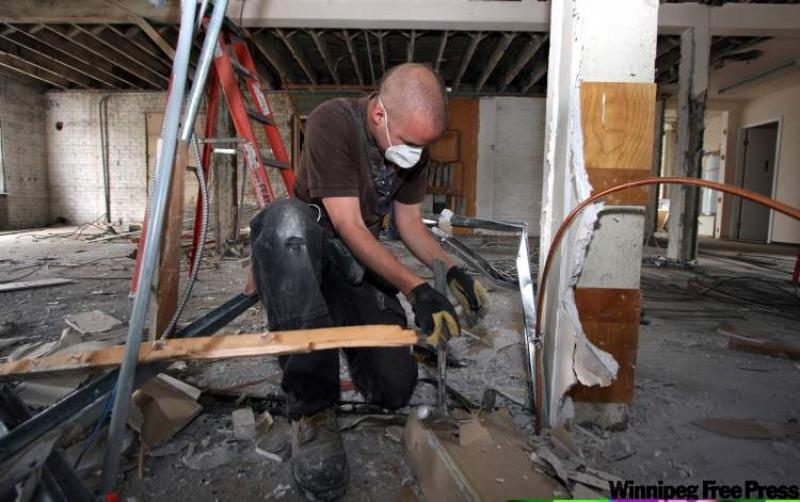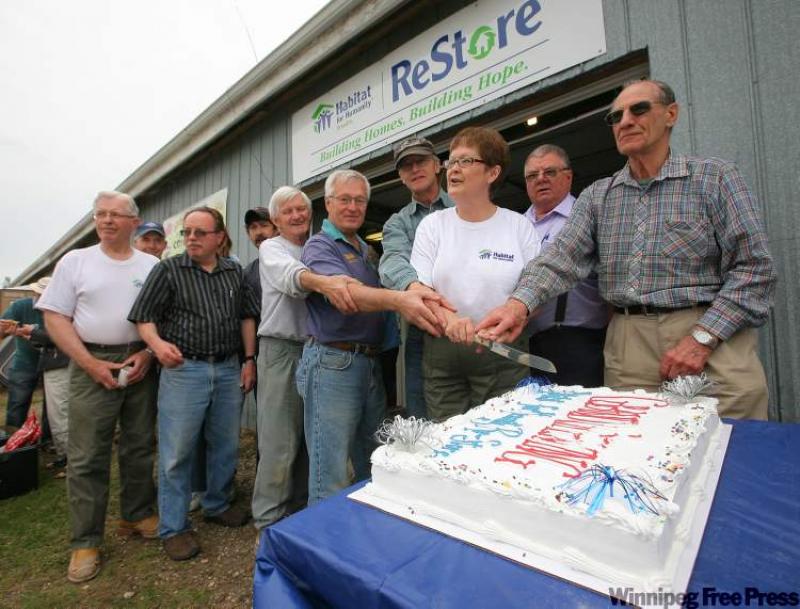
Renovating is a form of recycling: It's about finding new purpose for old rooms and buildings, and extending their usefulness. But, of course, every renovation also involves a lot of waste. It also involves choices about what you can do with that waste.
Construction waste is a by-product of renovation that can be reduced.
More than half the waste from the building industry -- and that's more than 100 million tons a year -- is from renovation and demolition. Only a small percentage (less than a quarter) is being recycled. There are facilities (not enough of them yet) that manage demolition waste: They grind it, chip it, and shred it, keeping it out of landfills and making it into fuel pellets or incorporating it into new products.
The first step you need to take is to plan and minimize waste on the renovation site. There are ways you and your contractor can do that:
-- Salvage what you can and send it to reuse centres: appliances, windows and doors, wood trim, flooring, cabinets, plumbing and electrical fixtures. Old-growth timber and true-dimensional lumber that you'd find in a home built early last century can be valuable.
-- Deconstruct instead of demolish. Deconstruction is basically 'unbuilding' the house, in reverse order. That way it's easier to sort materials for reuse.
-- Separate out construction waste -- drywall, wood, metal, glass, concrete, masonry and asphalt paving --on-site. Separating out mixed construction and demolition waste can be done at landfills and recycling facilities, but it's more energy-efficient to do it on-site.
Recycling, even though it's better for the environment, usually costs more in the short term. And we all seem to think in the short term, certainly when it comes to a renovation budget. So, if it's cheaper to pay the tipping fee at a landfill, a lot of builders and contractors will do that rather than recycle. And very few homeowners will even ask what's happening to their waste, let alone pay extra to ensure it's being handled in the best way.
We need to find ways to divert waste from the landfills. It's the law in most places around the country -- as it should be.
We need to stop planned obsolescence. Your house should outlast you, the way century homes did, and the way new homes have been built in the last decade probably won't.
Part of the problem is fashion: People buy a home that's perfectly good, but the style of the cupboards or flooring isn't to their taste, so out it all comes. And out it all goes to the landfill. That's foolish, to my mind. And it's wasteful. At the very least, those items can be reused.
But it's also about where you put your money in a renovation. We all think about the surface and the finishes, and that's where the budget goes. We'll put down a new floor on a weak or deteriorated subfloor and, within a short time, it fails. We'll finish a basement without ensuring it's watertight, or without creating a thermal break and, within a short time, we've got mould and it fails. The list goes on.
Renovations give us a chance to upgrade homes to be more environmentally efficient. Installing better insulation, more efficient appliances and improved water-conservation devices doesn't just cut the individual building owner's monthly expenses; it also cuts down on the waste of precious resources.
Part of the solution to the problem is to build better in the first place. We need to stop using building materials we know will mould and rot within years. We need to stop using techniques that have proved time and again to create condensation that leads to mould.
Having to rebuild poorly built structures is wasteful. I'm for durability, and doing it right the first time means building structures to last. That usually means building above minimum code. It means choosing more durable building materials and it means using stronger building techniques.
And we should avoid the use of materials that are not recyclable. Asphalt roofing shingles are a great example: Millions of tons of used shingles are dumped every year into landfills because of re-roofing. You've got to have a roof in good shape, but you'll be lucky to get 10 years out of even top-grade asphalt shingles. And most people don't buy the best (short-term thinking again), so they don't last as long, and the house needs a new roof that much sooner. Do the math.
I would recommend you choose a different roofing material. Metal roofs have a much longer life and are recyclable. But at the least, let's recover the waste shingles. Asphalt shingles can be recovered and shredded and added to roads and biking trails. They can be added to concrete as an aggregate.
They may be banned one day soon from municipal landfills. They should be diverted, but the recycling facilities that do so aren't available everywhere in the country. We need to create more incentives for businesses that divert, recover and reuse asphalt shingles and other construction waste. That's a real way renovation can recycle.
-- Canwest News Service
Catch Mike in his brand-new series, Holmes Inspection, airing Thursdays at 8 ET/PT on HGTV. For more information, visit www.hgtv.ca.
Do you have a question about home renovations? Email mikemakeitright.ca.




